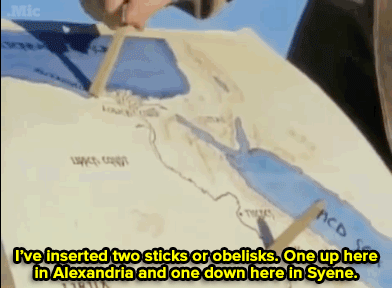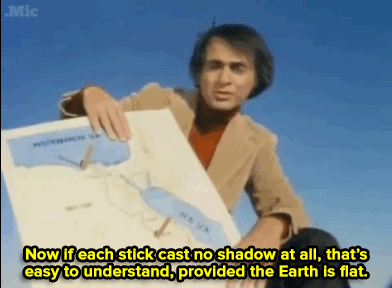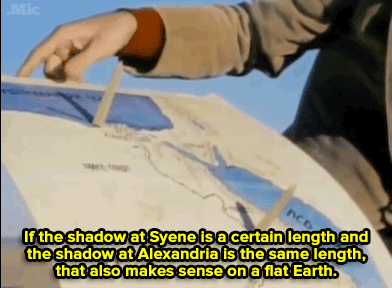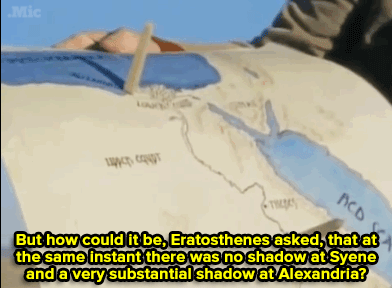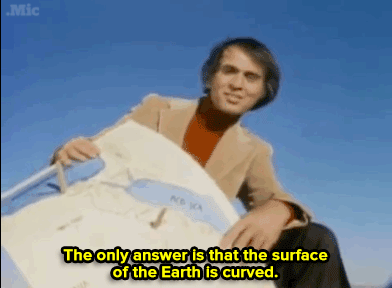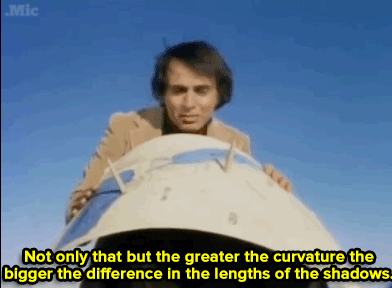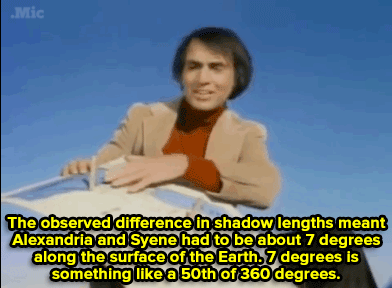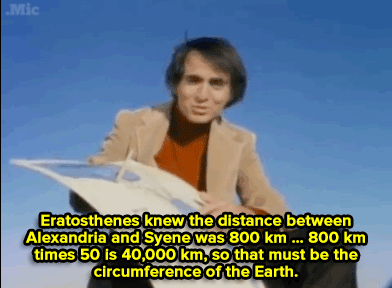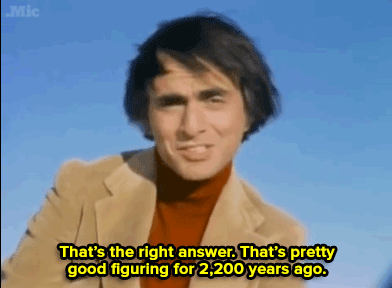cellarspider:when-it-rains-it-snows:kerosenekate:when-it-rains-it-snows:luckyladylily:trashboat:micd
cellarspider:when-it-rains-it-snows:kerosenekate:when-it-rains-it-snows:luckyladylily:trashboat:micdotcom:the-future-now:Watch: Carl Sagan schooled B.o.B. on his flat Earth theory more than 30 years agoFollow @the-future-now☕️bipch erastosthenes schooled b.o.b. 2,230 years agoOk so this is cool but I always wondered how they knew the shadows were different at the same instant. I mean it is not like they had phones. How did they sync up that instant. I feel like that would be interesting to know but no one ever says.^^^Does anybody know this one? How, that far apart, the time at which the shadows were observed was synced up? I am genuinely curious, not a goddamn moron asking a gotcha question. High/Low tide? (I live in the middle of the country I do not know for the precise habits of tidal activity.) The appearance of a star (or planet) in the sky? Something as utterly mundane as sunrise? Well, first of all, it wasn’t actually pillars! Eratosthenes was told about a well in Syene that, in the summer solstice every year (June 21st) would be illuminated at the bottom entirely and without any cast shadows. This indicated that the sun was directly overhead. Going off that well known curiosity and an intelligent hunch, our dude Eratosthenes waited until high noon of the summer solstice to measure the angle of a shadow cast by a stick in Alexandria. (Sidenote: Eratosthenes was a librarian of the infamous Library of Alexandria.)His next course of action was to hire bematists, surveyors of the time whose professional specialty was to measure distance by walking with equal length steps. They measured a distance between Alexandria and Syene of about 5000 stadia. (Guess where the word stadium comes from.) Once he had that measurement, Eratosthenes did his math-y thing, and there you have it.ANSWER EVEN COOLER THAN I HOPED!! Eratosthenes’ work was thorough enough that by the time he finished revising his calculations, he ended up only 66 km off of the actual polar circumference of the Earth, or an error margin of 0.16%. [wiki] -- source link
Tumblr Blog : the-future-now-deactivated20170.tumblr.com
#amazing#mathmatician#eratosthenes#carl sagan

